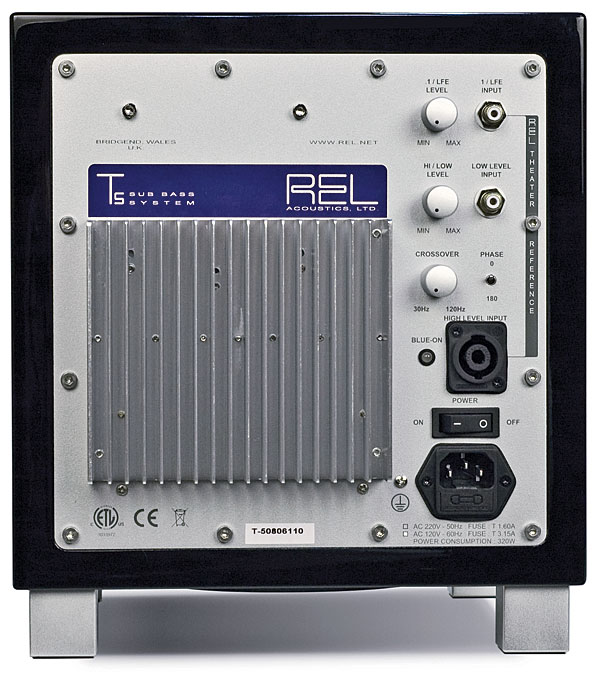REL T5 Subwoofer Page 2
T5 Setup
REL importer Sumiko sent along a Sonus Faber Toy speaker system, consisting of four small two-way satellites and a Toy Center, to use with the T5. Despite their name, these handsome leather-clad speakers are anything but. They feature 1-inch ring-radiator neodymium-magnet tweeters and 4-inch coated cellulose cone drivers that are designed to run full range. Still, their low-frequency response is extremely limited in both extension and output capability, as you’d expect for such compact speakers.
While REL’s instructions include a headline that says, “REL Setup Made Simple,” and the claim that basic setup should take “no more than 10 to 15 minutes,” don’t count on it—with REL or any other brand of subwoofer. Properly integrating a subwoofer is one of the trickiest jobs in audio, particularly with satellite speakers with limited bass response.

I followed REL’s instructions and ran my Marantz AV7005 surround processor’s subwoofer output into the REL’s LFE input. I also connected the Neutrik-terminated cable to my Parasound Halo A 51 amplifier’s speaker terminals on one end and the REL’s speaker-level input on the other.
REL recommends corner placement if possible. While that’s a good general rule for maximum bass, results vary from room to room, and smoothness of response is often the trade-off. Moving the sub out of the corner and more toward the center of the room can improve blending and sometimes smoothness, but often at the expense of overall output. In the wacky world of room acoustics, there are rules of thumb but few hard-and-fast ones.
For instance, in my room, which measures 15 by 25 feet, corner placement produces uncontrollable bass bloat with any brand of subwoofer. The best sub location proves to be on the long wall about 7 feet from the corner, regardless of subwoofer brand or size. Corner placement made it impossible to get a tight kick drum or supple yet clean double bass.
Unfortunately, with any subwoofer, you’ll find that movement of even a few inches can have a profound sonic effect. This is because the room modes that cause bass peaks and null points are present in every space. You can even predictably map them out in idealized rectangular rooms. Bass will boom in one location and all but disappear in another, often a short distance away. Subwoofer and seating location are equally susceptible to the peak and null points.
In fact, when you’re setting up a subwoofer, you might try this classic trick. Put the sub in your listening position, play a low-frequency test tone or music with reliable low-frequency information, and walk around the room. As you do, you’ll easily hear the bass reinforcement and cancellation locations. Find the reinforcement point along the wall behind the speakers, in the corner, or elsewhere, and start with the subwoofer there.
There isn’t sufficient space here to go into all of the intricacies involved in blending a sub’s upper limit response with the main speakers’ lower limit and finally setting the sub’s output level. Generally speaking, though, you’d lower the output to minimum, lower the crossover to 25 Hz so the subwoofer outputs only the deepest signals, and then bring the volume up to where you can just hear the subwoofer. After that, raise the crossover point above the speaker’s low-frequency limit to where it sounds truly obnoxious, and then lower it back down subtly until it tucks into place. As a final check, turn off the sub so it won’t mask any untoward sounds coming from the mains; then slowly bring the system up to high volume to make sure your main speakers aren’t being overworked and stressed by the bass load you’re asking them to reproduce with your selected crossover and level adjustments.
All of this is more easily said than done. The setup pros from Sumiko fine-tune speaker placement and subwoofer adjustment using Jennifer Warnes’ version of Leonard Cohen’s “Ballad of the Runaway Horse,” from the Famous Blue Raincoat CD, which has double bass and female voice. When everything’s correct, the bass is tight yet supple, and the lower registers of Warnes’ voice don’t bloat.




























































